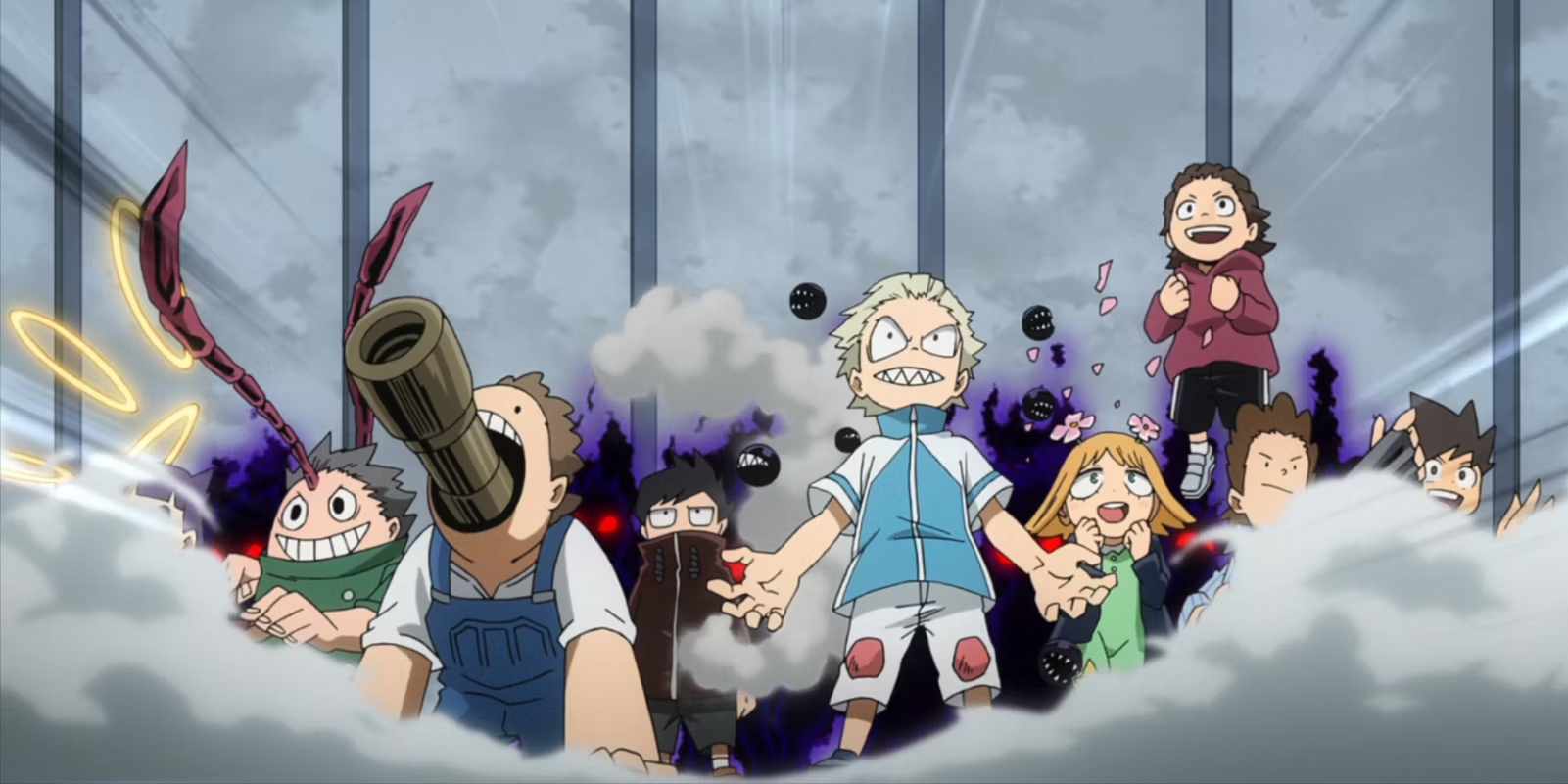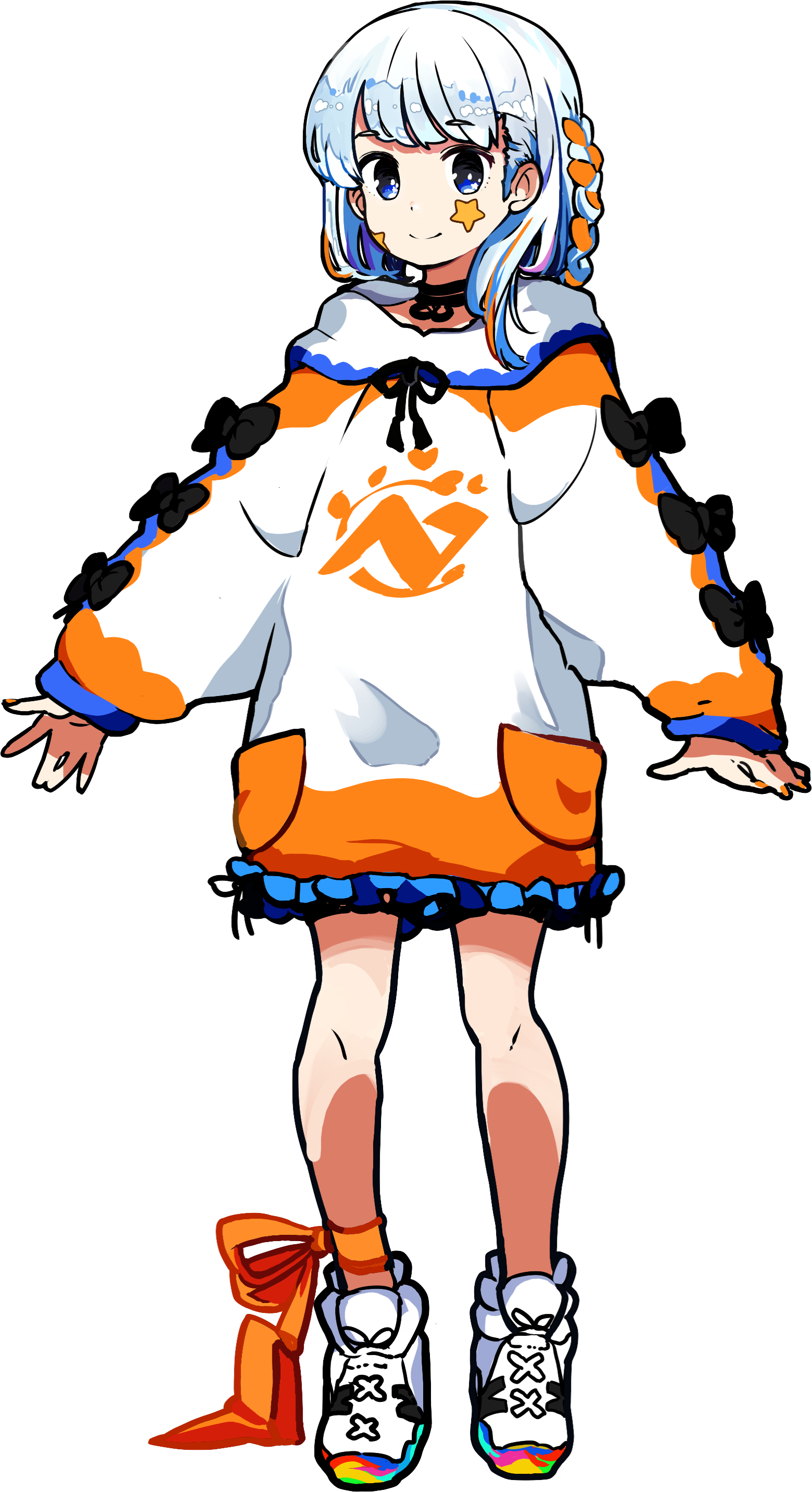Understanding the Quirk Types in My Hero Academia: A Comprehensive Analysis
- Category : Anime
- Tags: anime, my hero academia

Learn about the different categories of Quirks and how they shape the world of My Hero Academia.
My Hero Academia is a popular anime and manga series that revolves around a world where people have superhuman abilities called Quirks. However, not all Quirks are created equal, and the series categorizes them into different types. In this article, we’ll explore the Quirk Types in My Hero Academia and their impact on the series.
Section 1: What are Quirks?
- Definition and explanation of Quirks
Quirks are the unique superhuman abilities possessed by characters in the popular manga and anime series My Hero Academia. These abilities range from physical enhancements like super strength and agility to more complex abilities like shape-shifting and mind control. In this article, we will explore the different types of Quirks in My Hero Academia and their impact on the story. We will also examine how Quirks work, their limitations, and the societal implications of having superpowers in the world of My Hero Academia. Whether you’re a new fan of the series or a long-time enthusiast, this guide will help you understand the world of Quirks in My Hero Academia.
- The concept of Quirks in the world of My Hero Academia
In the world of My Hero Academia, Quirks are a fundamental part of society. They are defined as unique superhuman abilities possessed by a vast majority of the population. Quirks range from physical mutations to mental manipulations, each with their own strengths and weaknesses. Quirks play a significant role in the story of My Hero Academia, as they determine the path and potential of each character. Understanding the concept of Quirks is crucial for fans of the series, as they are the driving force behind the plot and character development.
Section 2: Categories of Quirks
- Overview of the different Quirk Types (Emitter, Transformation, Mutant, and Combination)
In the world of My Hero Academia, Quirks are a fundamental part of society, and they come in different forms. Understanding the different Quirk types is crucial in comprehending the abilities of the show’s various characters. There are four types of Quirks in the series: Emitter, Transformation, Mutant, and Combination.
Emitter Quirks are the most common, and they allow users to produce or emit a particular substance or energy. Examples of Emitter Quirks include Katsuki Bakugo’s Explosions, Shoto Todoroki’s Half-Cold Half-Hot, and Izuku Midoriya’s One for All.
Transformation Quirks, on the other hand, enable users to alter their physical characteristics or body shape. Examples of Transformation Quirks include Fumikage Tokoyami’s Dark Shadow and Minoru Mineta’s Pop Off.
Mutant Quirks are perhaps the most unique Quirk type, as they alter the user’s physical appearance or characteristics. For instance, Tsuyu Asui’s Frog form or Tamaki Amajiki’s Octopus form.
Lastly, Combination Quirks are a combination of two or more Quirk types. An example of a Combination Quirk is Eijiro Kirishima’s Hardening, which is a combination of Transformation and Emitter Quirks.
Understanding the different Quirk types is essential in understanding the abilities of My Hero Academia’s various characters. Knowing the distinctions between these Quirk types is crucial for fans of the show who want to analyze the characters and their powers.
- Examples of characters with each type of Quirk
When it comes to Quirks in My Hero Academia, there are four main types: Emitter, Transformation, Mutant, and Combination. Each type has its unique characteristics and abilities, and many characters in the series have different Quirk types.
Emitter Quirks allow the user to emit or control certain substances or energies. For example, Katsuki Bakugo’s Quirk allows him to create and manipulate explosive sweat. Transformation Quirks enable the user to alter their physical appearance or attributes. One notable character with this type of Quirk is Izuku Midoriya, whose Quirk grants him immense strength but also causes severe physical strain on his body. Mutant Quirks result in permanent physical changes to the user’s body, such as Tsuyu Asui’s frog-like appearance and abilities. Finally, Combination Quirks are a rare type that allows the user to combine two or more Quirks to create a new ability, like with Momo Yaoyorozu’s creation and transformation Quirks.
Other examples of characters with each type of Quirk include:
- Emitter Quirks: Shoto Todoroki’s ice and fire manipulation, Ochaco Uraraka’s gravity manipulation, and Fumikage Tokoyami’s control over a shadow-like creature called Dark Shadow.
- Transformation Quirks: Shota Aizawa’s erasure Quirk, Eijiro Kirishima’s hardening ability, and Mina Ashido’s acid secretion.
- Mutant Quirks: Minoru Mineta’s sticky hair, Mezo Shoji’s multiple limbs, and Koji Koda’s ability to talk to animals.
- Combination Quirks: Jiro Kyoka’s sound manipulation and Denki Kaminari’s electricity generation, and Tamaki Amajiki’s ability to manifest traits of the food he eats.
Overall, the variety of Quirk types and the unique abilities they provide make My Hero Academia’s world and characters fascinating to explore.
- Discussion of the strengths and weaknesses of each Quirk Type
In My Hero Academia, each Quirk Type has its own unique set of strengths and weaknesses. The Emitter type allows users to produce and manipulate specific substances, such as fire or ice. This type is typically used for long-range combat and can be extremely powerful, but the user may be limited by their own physical capabilities.
The Transformation type allows users to alter their physical appearance and abilities to some degree, such as turning into a monster or gaining animal-like features. This type is incredibly versatile but can be mentally and physically taxing for the user.
The Mutant type grants users a permanent physical alteration, such as wings or a tail. This type is great for mobility and can be very useful in combat, but the user may also have to deal with potential drawbacks, such as reduced speed or limited range.
The Combination type is a mix of two or more Quirk Types, which can result in unique and powerful abilities. However, the user may also be limited by the drawbacks of both Quirk Types.
Overall, each Quirk Type has its own unique advantages and disadvantages, and it is up to the user to find the best way to utilize their Quirk in various situations.
Section 3: Special Cases
- Quirkless characters and their role in the series
In the world of My Hero Academia, almost everyone possesses a Quirk, a unique superhuman ability that can range from simple skills like being able to breathe fire to more complex powers like controlling gravity. However, there are a few individuals who are born without a Quirk, known as Quirkless.
Despite being in the minority, Quirkless characters play an important role in the series. The most prominent example is the main protagonist, Izuku Midoriya, who was initially born without a Quirk. Despite this, he still dreams of becoming a hero and works tirelessly to achieve his goal.
Other Quirkless characters include Izuku’s childhood friend, Katsuki Bakugo, who possesses a powerful Explosion Quirk, and the pro hero Stain, who believes that only those without Quirks can truly understand the value of heroism.
Although Quirkless characters may lack superhuman abilities, they often make up for it with their intelligence, resourcefulness, and determination. They serve as a reminder that being a hero is not just about having a powerful Quirk, but also about having the right mindset and values.
Moreover, the presence of Quirkless characters adds a layer of complexity to the story, as they often face discrimination and ridicule from those who believe that Quirks are the sole determinant of one’s worth. Their struggles and triumphs serve as a commentary on real-world issues such as ableism and social inequality.
In conclusion, while Quirkless characters may not possess superhuman abilities, they play a crucial role in My Hero Academia. They serve as a reminder that being a hero is about more than just having a Quirk, and their struggles and triumphs add depth to the series.
- One For All and All For One, the unique Quirks that play a pivotal role in the series
One For All and All For One are two of the most important Quirks in My Hero Academia. One For All is a Quirk that is passed down from generation to generation, and it allows the user to enhance their physical abilities to incredible levels. All For One, on the other hand, is a Quirk that allows the user to steal other people’s Quirks and use them as their own.
These two Quirks have a complex and intertwined history in the series. All For One was originally used by a villain who sought to dominate the world by stealing as many Quirks as possible. One For All was created as a countermeasure to this, with the purpose of eventually defeating All For One and bringing peace to the world.
The power of One For All grows stronger with each passing generation, as each user adds their own power to the Quirk. The current wielder of One For All, Izuku Midoriya, is still learning to master its immense power. All For One, meanwhile, has been passed down from one villain to another throughout the series, with each user becoming more powerful than the last.
These two Quirks have played a pivotal role in many of the series’ most dramatic moments. For example, the final battle between All Might and All For One was a clash between the two most powerful users of these Quirks. The story of My Hero Academia is, in many ways, a story of the conflict between these two Quirks and the people who wield them.
Overall, One For All and All For One are unique Quirks that have played a significant role in the world of My Hero Academia. Their complex history and the dramatic clashes between their users have made them an integral part of the series.
- Other notable Quirks that don’t fit into the four categories
In addition to the four main Quirk types in My Hero Academia, there are other unique and interesting Quirks that don’t quite fit into those categories. These Quirks are often more specific in their abilities and can sometimes be more powerful than the traditional types.
One example is Fumikage Tokoyami’s Dark Shadow Quirk, which allows him to manifest a shadow-like creature that can attack his enemies. Another is Momo Yaoyorozu’s Creation Quirk, which enables her to create any non-living material from her exposed skin, including weapons and tools.
There are also Quirks that are more situational, such as Eri’s Rewind Quirk, which can reverse a person’s body to a previous state, effectively healing injuries. And then there’s the strange and mysterious Quirk used by Ojiro Mashirao, who has a tail that can be used to grip and hold onto things.
While these Quirks may not fit into the traditional categories, they add depth and intrigue to the world of My Hero Academia, showcasing the endless possibilities of Quirks in this unique universe.
Section 4: Implications of Quirk Types
- How Quirk Types shape the society and culture in the series
In the world of My Hero Academia, Quirk Types not only define an individual’s abilities but also play a significant role in shaping society and culture. The series explores the idea of a world where almost everyone has some kind of power, and those without are at a significant disadvantage. Quirk Types impact various aspects of life, such as education, employment, and even hero rankings.
The Quirk Types affect how individuals are trained to use their abilities and the type of jobs they are suitable for. For instance, individuals with Transformation Quirks may be better suited for stealth operations, while those with Emitter Quirks may excel at long-range combat. Additionally, heroes and villains are ranked based on their Quirks and how effectively they can use them, leading to fierce competition and a desire for individuals to have the strongest abilities possible.
Quirks also influence society’s culture and values, with heroism becoming a revered profession and those without powers often being ostracized. The series explores the societal pressures that come with having a Quirk and the expectations placed on individuals with powerful abilities. It also delves into the darker aspects of society, such as discrimination against those with “villainous” Quirks and the exploitation of Quirkless individuals for the benefit of those with powers.
Overall, Quirk Types in My Hero Academia have a significant impact on the world and its inhabitants. The series uses this concept to explore various themes and societal issues, making it an engaging and thought-provoking read.
- How Quirk Types affect character development and relationships
In the world of My Hero Academia, Quirk Types play a significant role in shaping character development and relationships. The type of Quirk a character possesses often determines their personality, behavior, and their place in society. For example, characters with powerful or versatile Quirks may have a sense of superiority or entitlement, while Quirkless individuals may feel inadequate or excluded.
Furthermore, Quirk Types can impact relationships between characters. For instance, characters with complementary Quirks may form strong partnerships, such as the combination of Shoto Todoroki’s ice and fire powers, which were inherited from his parents. On the other hand, characters with opposing Quirks may have conflicts, such as the rivalry between Izuku Midoriya’s One For All and Katsuki Bakugo’s Explosion Quirk.
Additionally, Quirk Types can also influence character arcs and growth. For instance, characters with initially weak or useless Quirks may experience significant character development as they learn to hone their powers and find creative applications. Similarly, characters with powerful Quirks may struggle with their abilities and face challenges that force them to confront their limits and flaws.
Overall, Quirk Types are a crucial element in the My Hero Academia series that shapes the characters and their relationships with each other. Whether a character is born with a powerful Quirk or is Quirkless, their unique abilities or lack thereof play a significant role in their journey and growth.
- The role of Quirk Types in the series’ overarching themes and messages
In My Hero Academia, Quirk Types not only shape the world and characters, but also contribute to the series’ overarching themes and messages. The concept of Quirks is a metaphor for individuality and diversity, and how society can both celebrate and discriminate against those who are different. The struggles and triumphs of characters with different Quirk Types reflect the challenges and rewards of embracing one’s unique qualities. Additionally, the idea of Quirk Singularity and the possibility of losing control of one’s Quirk emphasizes the importance of responsible use of power and the consequences of unchecked ambition. Ultimately, the Quirk Types in My Hero Academia serve as a lens to explore the complexities of identity, power, and societal expectations.
Section 5: Conclusion and Final Thoughts
- Recap of the different Quirk Types and their impact on the series
In the world of My Hero Academia, Quirks are unique abilities possessed by individuals that define their superhuman capabilities. The series is based on the idea that Quirks have become a crucial part of the society and culture, shaping people’s lives in every aspect. In this article, we have discussed the four main Quirk Types (Emitter, Transformation, Mutant, and Combination) and their strengths and weaknesses. We also explored the role of Quirkless characters, One For All, and All For One in the series. Additionally, we touched upon some notable Quirks that don’t fit into the four categories. Throughout the series, Quirk Types have a significant impact on character development and relationships. They also play a pivotal role in the series’ overarching themes and messages, such as discrimination, individuality, and the balance between power and responsibility. Understanding Quirk Types in My Hero Academia is essential for fully appreciating the complexity and depth of the series.
- Final thoughts on the significance of Quirk Types in My Hero Academia
As one of the defining features of the My Hero Academia universe, Quirk Types play a critical role in shaping the series’ world, characters, and themes. From the Emitter, Transformation, Mutant, and Combination Quirk Types to the unique Quirks such as One For All and All For One, the Quirk system provides a framework for exploring complex ideas such as identity, power, and responsibility. By understanding the strengths and weaknesses of each Quirk Type, we can gain deeper insights into character development and relationships, as well as the society and culture depicted in the series. Overall, the concept of Quirk Types is a central aspect of what makes My Hero Academia such a unique and captivating story.
- Suggestions for further reading and exploration
If you’re interested in diving deeper into the world of My Hero Academia’s Quirk Types, there are several resources available for further reading and exploration.
First and foremost, the manga and anime itself are excellent resources for understanding the nuances of Quirks and their impact on the series. Additionally, the My Hero Academia wiki is a comprehensive database of information about the series, including detailed explanations of each Quirk Type and examples of characters with each type of Quirk.
For those looking for a more academic approach, the book “The Philosophy of Anime” by Josef Steiff and Tristan D. Tamplin features a chapter dedicated to My Hero Academia and its exploration of the theme of individuality through the use of Quirks.
Lastly, fans of the series can connect with each other and discuss their favorite Quirks and characters through online communities such as Reddit and Discord.
Whether you’re a casual fan or a dedicated enthusiast, there’s always more to learn and discover about the unique and fascinating world of My Hero Academia’s Quirk Types.




No Comments